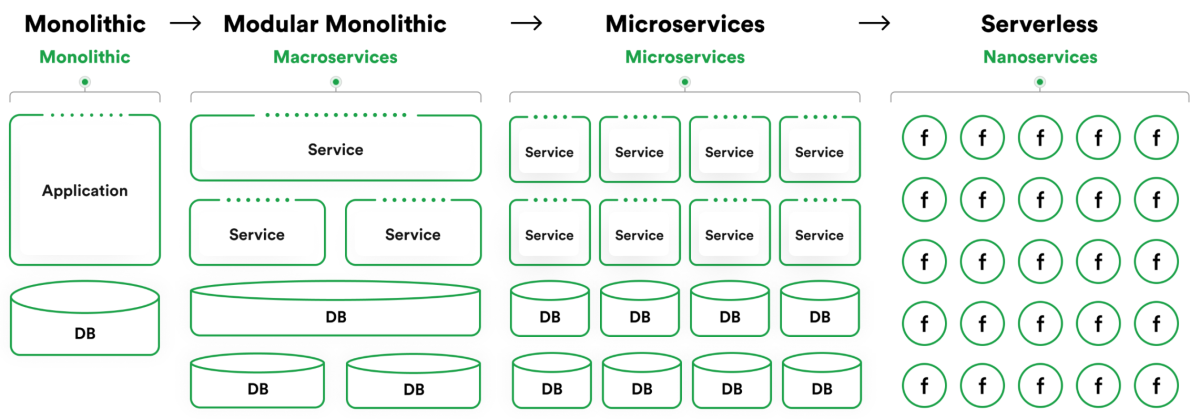During the first phases of the software industry, monolithic architecture was the de facto standard for designing and deploying applications. All software application components are tightly integrated and compiled into a single codebase in a monolithic architecture. This setup simplifies the development process, especially for smaller teams and more straightforward applications, as it allows for a unified development environment where changes can be implemented rapidly and tested comprehensively.
Advantages of Monoliths
Simplicity and Initial Productivity
The simplicity of deploying and managing a single application stack makes monoliths particularly appealing for startups and small-scale applications. Due to reduced complexity in the deployment pipeline, smaller projects often benefit from a reduction in initial development time when using a monolithic structure.
Performance Benefits
With all processes running in a single process space, monoliths can minimize latency, as no network calls or data format translations are needed between different services. This architectural benefit is crucial for applications requiring high-performance computing and real-time processing.
Ease of Testing and Debugging
Since all components are within the same application, it simplifies the setup for development and testing environments, which can be an advantage during the early stages of an application’s lifecycle. Monolithic applications often experience a faster turnaround for debugging and testing compared to distributed architectures.
Transactional Integrity
A monolithic approach ensures data consistency and integrity as it operates on a single database. This simplifies transaction management without the complexities of distributed systems, where data consistency can be a significant challenge.
Disadvantages of Monoliths
Scalability Challenges
As applications grow, scaling a monolithic application often means scaling the entire application rather than just the components that require more resources. This can lead to significant overhead and inefficiency. Monolithic architectures could lead to an increase in resource consumption during scaling operations for large-scale applications.
Slower Development Cycles
As the codebase grows, the complexity increases, making it challenging to implement new features quickly. The monolithic nature also means that any update requires redeploying the entire application, which can introduce risk and downtime.
Tight Coupling and Dependency
Due to tight coupling, changes in one part of the system can affect other parts, leading to a higher risk of unintended consequences when updating code. This can also hinder the adoption of new technologies or frameworks, as the entire system may need significant refactoring to incorporate new changes.
Difficulty in Adopting New Technologies
Integrating new technologies or frameworks into a monolithic application becomes increasingly challenging as technology evolves. This often results in complete rewrites or significant modifications, which can be costly and time-consuming.




